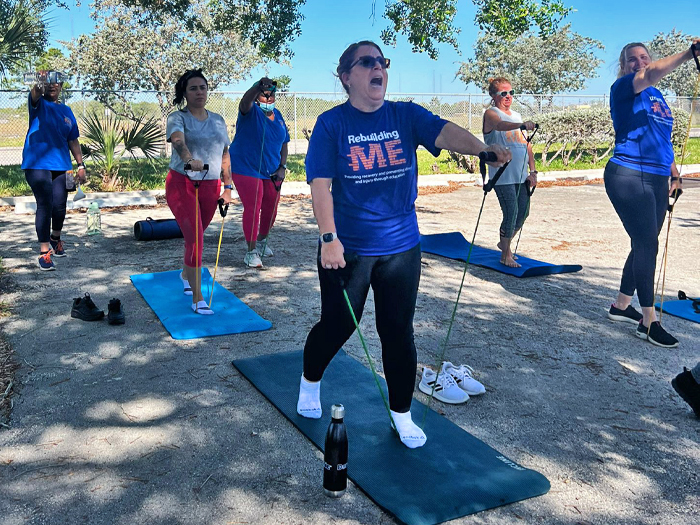Will More States Adopt Drug Formularies? Reports From These Five States Could Help Them Decide

As of January 1, 2023, 17 states have adopted drug formularies or preferred drug lists, and several other states are considering their implementation. The Workers’ Compensation Research Institute (WCRI) recently compiled five reports on five states to provide an overview of what these drug formularies are showing after several years of implementation.
In the new report, several questions are addressed for each state around prescription utilization; the impact on drug status in workers’ comp; updates and influences on drug groups like opioids, NSAIDs and more; and these formularies’ effect on payments made per claim.
California, Alabama, New York, Kentucky and Indiana were among the reviewed states.
Per WCRI’s president and CEO, John Ruser, “These studies can help policymakers and other stakeholders understand the impact of implementing various types of drug formularies on prescriptions provided to workers with newer work-related injuries and on associated prescription drug costs in their state workers’ compensation systems.”
Here are some takeaways from each report.
California
California’s drug formulary came into effect on January 1, 2018. WCRI researchers measured the impact from one year pre-formulary through to Q1 2021.
As noted by the report, “the COVID-19 pandemic resulted in some temporary disruptions in prescription utilization at the start of the pandemic before largely reverting to pre-pandemic experience by the third quarter of 2020.”
Here are some of the takeaways the researchers called out:
- Post-implementation, the California formulary had an immediate impact on prescribing.
- Both a decrease in claims with prescriptions as well as a decrease in the number of prescriptions per claim led to a large decrease in the number of prescriptions filled per medical claim starting Q1 2018 through Q1 2021.
- The formulary classifies drugs as exempt and non-exempt. Prior to the formulary, the majority of prescriptions fell into the exempt category (56% in Q4 2017). After it went into effect, this number decreased by 2%. In comparison, non-exempt drug prescriptions fell by 40%.
Breaking down specific drug groups like NSAIDs, opioids and more, the report found:
- Pre-formulary, 96% of NSAIDs prescribed to workers were exempt drugs, meaning these drugs would not have required prior authorization (PA).
- All prescriptions for opioids and musculoskeletal therapy agents were for non-exempt drugs pre-formulary, in comparison, meaning they required prior authorization under the formulary.
- Looking at just opioids, the number of prescriptions per claim decreased by 26% between Q4 2017 and Q1 2018, as the formulary went into effect. Between Q1 2018 and Q2 2018, prescriptions decreased another 16%.
To learn more about the California study, visit the WCRI website here.
Arkansas
The Arkansas Workers’ Compensation Commission implemented its workers’ comp drug formulary on July 1, 2018. The WCRI study looked at long-term trends following its implementation, starting in Q1 2016 through Q1 2021.
Among the findings, here are a few that stood out:
- There was a steady decline in the percentage of medical claims that had prescriptions in Arkansas starting in Q1 2016 through Q1 2021, from around 30% to 17%. This decline could be seen in non-formulary states, but not as rapidly as in Arkansas, falling from approximately 30% to 23%.
- Payments per prescription peaked in Q4 2017 in Arkansas and declined following the formulary’s implementation. In comparison, non-formulary states saw a steady increase in payments per prescription.
- The Arkansas formulary drug list identifies allowed drugs and allowed drugs with limits in terms of what can be prescribed for work-related injuries. Looking at Q2 2018, the report researchers noted allowed drugs made up 54% of prescriptions and 42% of prescription payments. For non-formulary states, those numbers were 29% and 17% respectively.
When looking at specific drug groups that are considered cost drivers in workers’ comp (NSAIDs, musculoskeletal therapy agents, opioids, anticonvulsants etc.), the study broke down prescriptions filled by allowed drugs, allowed drugs with limits and PA required drugs.
Of note:
- 78% of NSAID prescriptions filled by Arkansas workers pre-formulary were for allowed drugs.
- In 2018 Q2, just a few months after the formulary was in effect, 45% of opioid prescriptions dispensed to Arkansas workers were considered allowed drugs with limits. Fifty-four percent were allowed drugs.
- Prescription share for these cost-driver drugs did not see a significant change from the months right before the formulary took effect to the months right after, though there was a three percentage point decrease for opioids.
To learn more about the Arkansas study, visit the WCRI website here.
Indiana
Effective January 1, 2019, the Indiana workers’ compensation drug formulary limits reimbursement for certain drugs designated as “N” drugs. Like the California and Arkansas reports, the researchers focused on the time frame between Q1 2016 through Q1 2021.
Here’s what they found:
- Though the formulary went into effect in 2019, the state phased in the formulary over a one-year period to ensure injured workers treated with N drugs wouldn’t face abrupt changes to care.
- Trends showed formulary implementation for new prescriptions “had very little impact on prescribing” in the state, per the report. Indiana remained below the number of prescriptions per claim as compared to non-formulary states, however both remained consistent and close.
- Payments per prescription remained stable post-formulary.
- Because Indiana did phase in the formulary’s implementation, changes in utilization and payments aligned with the 2020 final implementation date, showing a prescription payment per medical claim decrease of 23%.
Breaking down “N” drug prescriptions, the report noted that “physicians are required to seek approval from the payor prior to dispensing ‘N’ drugs.” There’s also another classification of drug in Indiana, with “Y” status, which do not require preauthorization.
Here’s how the formulary impacted each:
- There was no noticeable change in the number of prescriptions per claim for either N or Y drugs when the formulary was first implemented in 2019; however, there was a decrease in N drug prescribing between Q4 2018 and Q1 2019, from 13% to 11%.
- In total, the mix of drugs prescribed to injured workers over the course of the report remained relatively the same. N drugs made up around 5-7% throughout, while Y drugs remained near 88-91%.
To learn more about the Indiana study, visit the WCRI website here.
Kentucky
Kentucky’s Workers’ Compensation Pharmaceutical Formulary was rolled out in two steps in order to provide injured workers with ongoing care without interruption, much like the Indiana formulary.
For this formulary, drugs are classified as “N” drugs and “Y” drugs. Like each previous study, the researchers reviewed Q1 2016 through Q1 2021.
- The number of prescriptions per claim had a steady decrease post-formulary between Q1 2020 and Q1 2021. This is likely correlated to the two-phase implementation that Kentucky employed.
- Payments per prescription had a small drop immediately post-formulary. Non-formulary states saw a gradual increase in the same period.
Looking more closely at the changes in prescribing, here’s what the report noted:
- Prior to formulary implementation, Y drugs made up 89% of prescriptions and 23% of prescription payments. N drugs made up 7% and 22% respectively.
- Post-formulary, these numbers remained relatively the same.
- There was a decrease in the utilization and payments for dermatological agents in Kentucky as compared to non-formulary states post-implementation.
To learn more about the Kentucky study, visit the WCRI website here.
New York
The New York Workers’ Compensation Board began to establish its drug formulary in 2017. By May 2019, the board adopted the formulary to apply to all claims regardless of the date of injury. By December of that year, it went into full effect for new prescriptions.
The formulary itself didn’t completely roll out until March 2022 due to a delay caused by the pandemic. This last piece of the formulary deals with refills and renewals.
The formulary itself is based on the effectiveness of medications and their appropriateness for treatment of work-related injuries in an outpatient setting.
Here’s a look at some of the report’s highlights:
- During the measured time frame from Q1 2016 through Q1 2021, the report noted an immediate impact on New York prescribing following the partial implementation of the formulary.
- The number of prescriptions per claim showed a steady decrease post-formulary.
- Q1 2020 marks the first post-formulary quarter, and also marked the start of the COVID-19 pandemic. Per the report, “The pandemic resulted in a sharp decline in workers’ compensation claims … and an increase in prescription payments per medical claims.”
- The prescription payments per medical claim decreased by 34%, from $41 in Q3 2019 to $27 in Q1 2021. In non-formulary states, this measure increased by 9%.
New York’s formulary broke down the different types of prescription drugs into two main categories: formulary drugs and formulary drugs with limits. The latter required prior authorization.
In terms of changes in prescribing these drugs, the report said the following:
- The share of all prescriptions for formulary drugs increased from 50-57% to about 64-68% after the formulary was fully introduced.
- There was an 11% decrease in claims with a prescription for non-formulary drugs noted between Q3 2019 and Q1 2021.
- New York, like many non-formulary states, saw a rapid decline in opioid prescriptions during the studied time frame.
To learn more about the New York study, visit the WCRI website here.
Additional Reading
To learn more about or to download these five individual studies, visit WCRI’s site for the full report. &










